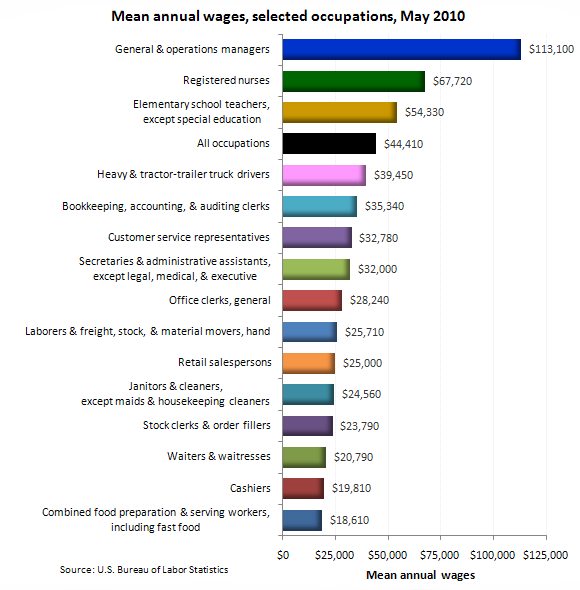Largest Occupations Pay Less
If you’re earning more than $44,410, consider yourself lucky; you are earning above the national average salary for all occupations.
But if your job is one of the top fifteen in the country (as measured by number of employees), chances are you’re salary is not even average.
Among these 15 largest occupations, only General and operations managers (whoearned, on average, $113,100 per year in May 2010), registered nurses (who had average annual earnings of $67,720), and elementary school teachers, except special education (who earned $54,330) were above the national average.
In contrast, waiters and waitresses, cashiers, and combined food preparation and serving workers, including fast food all had average annual earnings of less than $21,000. These three occupations not only had the lowest wages among the 15 largest occupations, they were also among the lowest-paying occupations overall.
Employment in the 15 largest occupations ranged from approximately 1.5 million (heavy and tractor-trailer truck drivers and elementary school teachers, except special education) to 4.2 million (retail salespersons).
Apparently, the occupations that supply the most jobs in our economy are also some of the lowest paid. If job seekers hope to make a salary above the national average, they may need to develop skills and gear their job search to more obscure sectors of the economy. And perhaps as our economic recovery continues, some higher paying jobs will make their way into the list of plentiful occupations in the future.


